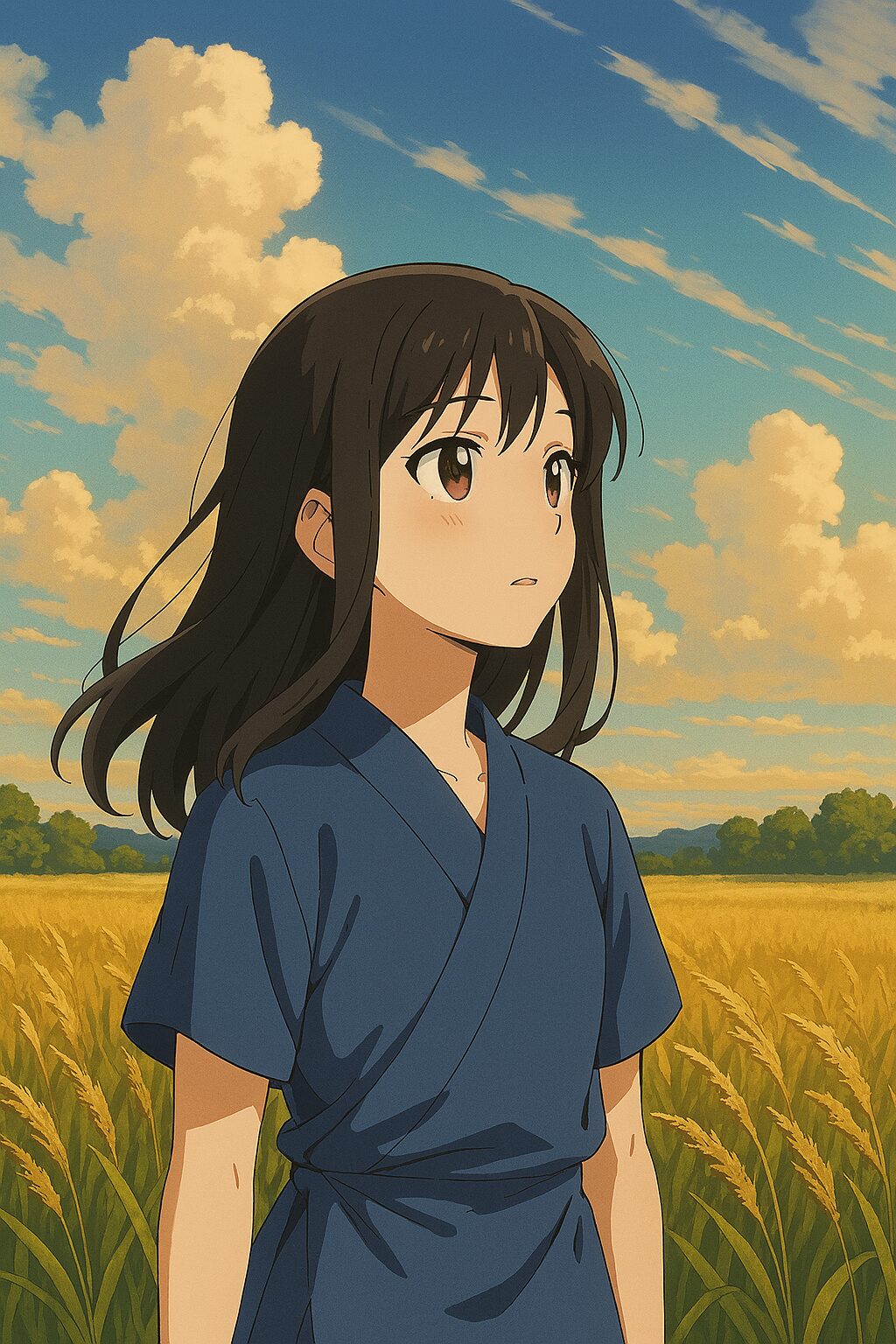Shosho (処暑) is one of Japan’s 24 solar terms, marking the moment when the intense summer heat begins to ease. Though the days may still be hot, nature starts whispering signs of seasonal change. It’s not a sudden shift—it’s a soft breath of autumn arriving.
- 🌞 What Does “Shosho” Mean?
- 🍃 Nature’s Subtle Signals
- 🍵 Seasonal Traditions and Daily Life
- 🧘♀️ Shosho as a Mindset
- 🌍 A Message to Global Readers
- 📎 Related Articles
- 📝 Conclusion
- 🌞 はじめに:処暑という季節の詩
- 🍃 処暑の意味と由来
- 🐞 自然が語りかける季節の変化
- 🍵 処暑の暮らしと文化
- 🧘♀️ 処暑が教えてくれる“自然との共感”
- 🌍 海外の読者へ:あなたの“処暑”を見つけてみませんか?
- 📎 関連記事・おすすめリンク
- 📝 まとめ:処暑は“季節の詩”である
🌞 What Does “Shosho” Mean?
The word “Shosho” literally means “heat subsides.” It follows Risshū, the beginning of autumn in the Japanese calendar. While rooted in Chinese tradition, Japan has adapted the solar terms to reflect its own seasonal rhythms and cultural sensibilities.
🍃 Nature’s Subtle Signals
During Shosho, the natural world begins to shift:
- Sounds: Cicadas grow quiet, and crickets begin to chirp.
- Sky: Clouds become higher and more delicate.
- Air: Evening breezes feel cooler on the skin.
These changes are beautifully captured in Japan’s poetic 72 micro-seasons, such as:
- Wata no hanashibe hiraku
- Tenchi hajimete samushi – “The heavens and earth begin to cool”
🍵 Seasonal Traditions and Daily Life
Shosho is a time of gentle transition in Japanese life:
- Seasonal greetings: People switch from shochū mimai (mid-summer cards) to zansho mimai (late-summer cards).
- Seasonal foods: Eggplants, grapes, sweet potatoes, and chestnuts begin to appear in markets and meals.
- Autumn preparations: Families begin planning for tsukimi (moon-viewing) and momijigari (autumn leaf hunting).
🧘♀️ Shosho as a Mindset
In Japan, the calendar is more than a tool—it’s a philosophy. Shosho invites us to slow down and notice the quiet signals of change. It’s a reminder to align our hearts with nature’s rhythm and prepare ourselves emotionally for the coming season.
🌍 A Message to Global Readers
Even if you live outside Japan, you can experience your own version of Shosho. Look around:
- Are the trees beginning to change?
- Does the morning air feel a little cooler?
- Are seasonal fruits and vegetables shifting?
These are your local whispers of autumn. Shosho teaches us to listen—to nature, to time, and to ourselves.
📎 Related Articles
- 🌿 What Is the 72 Micro-Seasons? Japan’s Poetic Calendar That Breathes with Nature
- 🍁 Risshū: Discovering Autumn in the Lingering Heat of Japanese Summer
📝 Conclusion
Shosho is not just a date—it’s a seasonal poem. It reflects the Japanese way of living in harmony with nature, embracing change with grace. Whether you’re in Tokyo or Toronto, Kyoto or Cape Town, may this gentle farewell to summer inspire you to notice the beauty of transition.
🧊 処暑とは?――日本の夏が静かに終わりを告げる日
Discovering “Shosho”: Japan’s Gentle Farewell to Summer
🌞 はじめに:処暑という季節の詩
日本には、季節の移ろいを繊細に捉える「二十四節気(にじゅうしせっき)」という暦があります。 その中のひとつが「処暑(しょしょ)」――毎年8月23日頃に訪れる、暑さが少しずつ収まってくる節目です。
でも、処暑は単なる気温の変化ではありません。 それは、自然と人の心が静かに秋へと歩み始める瞬間。 この記事では、日本の季節感や文化を知らない海外の方にもわかりやすく、処暑の魅力をたっぷりとご紹介します。
🍃 処暑の意味と由来
「処暑」という言葉は、「暑さが“処(おさ)まる”」という意味から来ています。 二十四節気は中国由来ですが、日本では独自の感性で受け継がれ、自然との共生を大切にする文化として根付いています。
処暑は、立秋(8月7日頃)に続く節気であり、 「残暑」という言葉が使われ始める時期でもあります。
🌿 関連記事:🌿 What Is the 72 Micro-Seasons? Japan’s Poetic Calendar That Breathes with Nature
🐞 自然が語りかける季節の変化
処暑の頃、日本の自然はこんなふうに変化します:
- セミの声が静まり、コオロギの音が響く 夏の象徴だったセミが姿を消し、秋の虫たちが登場します。
- 空が高く、雲が薄くなる 入道雲から、すじ雲やうろこ雲へ。空の表情が変わります。
- 夕方の風が涼しくなる 日中は暑くても、夕暮れ時には肌に心地よい風が吹き始めます。
こうした微細な変化は、日本独自の「七十二候(しちじゅうにこう)」という暦にも表現されています。 たとえば、処暑の期間にはこんな候があります:
- 綿柎開(わたのはなしべひらく):綿の花が開く頃
- 天地始粛(てんちはじめてさむし):天地が次第に冷えてくる頃
🌿 関連記事:🍁 Risshū: Discovering Autumn in the Lingering Heat of Japanese Summer
🍵 処暑の暮らしと文化
📮 暑中見舞いから残暑見舞いへ
日本では、夏の挨拶として「暑中見舞い」や「残暑見舞い」を送る習慣があります。 処暑を境に、「暑中」から「残暑」へと表現が変わるのです。 これは、季節の移ろいに寄り添う心遣いの表れでもあります。
🍇 季節の食べ物
処暑の頃に旬を迎える食材には、こんなものがあります:
- ナス:焼きナスや煮浸しで味わう夏の名残
- ぶどう:甘みが増し、秋の果物の先駆け
- さつまいも:ほくほくとした食感が秋の気配を感じさせる
- 栗:和菓子や炊き込みご飯に使われる秋の味覚
🏮 秋の行事の準備
処暑を過ぎると、日本では秋の行事が始まります:
- お月見(十五夜):月を愛でる風習。団子やすすきを供えます
- 紅葉狩り:山や庭園で色づく葉を楽しむ文化
- 秋祭り:地域ごとに異なる神事や踊りが行われます
🧘♀️ 処暑が教えてくれる“自然との共感”
日本の暦は、単なる日付の羅列ではありません。 それは、自然と人との対話の記録です。
処暑は、「暑さが収まる」という物理的な現象だけでなく、 「心が秋に向かって静かに整っていく」時間でもあります。
この感覚は、世界中どこにいても共感できるものです。 たとえば、夕方の風が少し涼しく感じたとき、 それはあなたの国でも「処暑」が訪れているのかもしれません。
🌍 海外の読者へ:あなたの“処暑”を見つけてみませんか?
この記事を読んでくださっているあなたが、もし日本以外の国に住んでいるなら―― ぜひ、自分の周りの季節の変化に目を向けてみてください。
- 木々の色が変わり始めていませんか?
- 朝の空気が少し冷たく感じませんか?
- 食卓に並ぶ野菜や果物が変わってきていませんか?
それは、あなたの国の「処暑」かもしれません。 日本の暦は、自然と共に生きる心のあり方を教えてくれます。
📎 関連記事・おすすめリンク
📝 まとめ:処暑は“季節の詩”である
処暑は、ただの気象情報ではありません。 それは、自然の声に耳を傾ける日本人の感性を映し出す鏡です。
この記事を通して、少しでも日本の季節感や文化に触れていただけたなら嬉しいです。 そして、あなた自身の「季節の詩」を見つけるきっかけになれば――それが、処暑の本当の意味かもしれません。



コメント